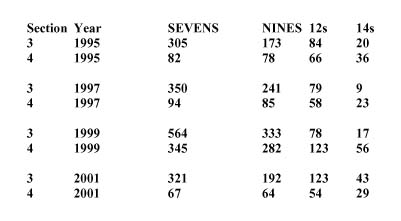wetnet
Active member
- Joined
- Mar 20, 2008
- Messages
- 1,412
I'm hard pressed to believe that people keep big fish just because they love to eat trout. I'd hope that maybe with the send a picture in where they can do a mount without the fish might help. You get a great fish on the wall if that's your thing and you have the opportunity to catch it again. My son has 4 fish on his wall. One Brook, one brown, one ranbow and one golden rainbow. He caught them when he was between 14 and 15 years old. If you asked him now if he had the choice to mount each fish again or catch it again you can probably guess the answer.




